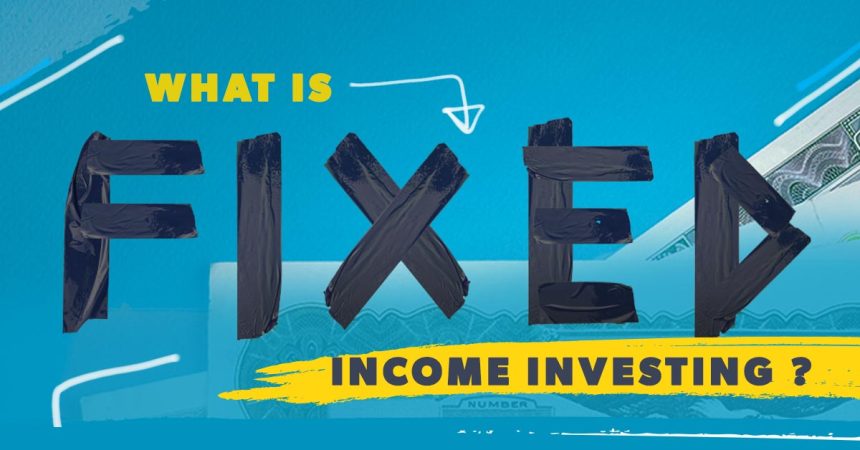When you decide to get serious about saving for your retirement, it’s important to know your options. And trust us, there are a lot of options out there to choose from. You need to know what to invest in and what to stay away from.
From time to time, you might hear the term “fixed income investments” thrown around, especially when people are talking about things like bonds and annuities. They might sound good at first, but do they really deserve a place inside your retirement portfolio? Just sit tight. We’ll walk through what fixed income investing is all about.
What Is Fixed Income Investing?
Basically, fixed income investing is designed to give people a steady stream of income on a regular basis, usually in the form of interest payments from bonds. Now in theory, fixed income investments are supposed to offer investors something to invest in that is less risky than stocks. The problem is, that usually means you’re settling for below-average returns on your investments.
Think of it like its own category of investments that pays investors a certain amount of cash in the form of dividends and fixed interest. But it’s important to mention that fixed income investments typically involve arrangements that look a lot like loans. That’s no bueno.
Types of Fixed Income Investments
When it comes to fixed income investments, one thing’s for sure: You’ve got options. Here are some of the most classic forms of fixed income investments you might come across:
Certificates of Deposit (CDs)
When we’re talking about CDs, we’re not talking about those little discs we used to play music with before Spotify took over. No, certificates of deposit (CDs) are basically savings accounts that let you save money at a fixed interest rate for a set amount of time. There’s a catch, though. Most CDs come with a certificate that says you’ll need to leave the money in there until the CD reaches its maturity date, which is when you’ll be able to take your money out without paying a penalty.
Here’s the problem with CDs—they have very low interest rates. They might be useful for reaching short-term savings goals, but we don’t even consider them a true long-term investment. Steer clear!
Bonds
Bonds, also known as “long-term fixed income investments,” let companies or governments borrow money from you. That’s right, you’re basically giving them a loan! When you buy a bond, you’ll receive a steady stream of interest payments from the company or government until the bond reaches its maturity date—that’s when they will pay you back for the original amount.
So, let’s say you buy a $1,000 bond from your local government. The term of the bond is two years with a fixed annual interest rate of 5%. In this scenario, you would receive $50 in interest each year from the city throughout the bond’s term, and then you’ll get your initial $1,000 back at the end of the two years. That means your initial $1,000 investment just turned into $1,100.
While there are a lot of different types of bonds, these three are the most common types: government (backed by the U.S. Treasury), municipal (issued by state or local governments), or corporate (issued by companies to fund growth). You could even buy bond mutual funds or exchange-traded funds (ETFs), which are funds made up of many different bonds.
Bonds have a reputation for being “safe” investments because they don’t rise and fall like stocks and mutual funds do. But here’s the thing: The returns you get from bonds just aren’t impressive, especially when compared to stocks. Earning a fixed interest rate might protect you when the stock market is down, but it also means you won’t profit when times are good.
Market chaos, inflation, your future—work with a pro to navigate this stuff.
Bottom line? We don’t recommend investing in bonds—you’re better off investing your hard-earned money in growth stock mutual funds.
Fixed-Rate Annuities
A fixed-rate annuity is basically an agreement between you and an insurance company. Here’s how it works: You make a series of payments to an insurance company for a certain amount of time, called the “accumulation phase.” In turn, they promise to pay you a specific, guaranteed interest rate on your contributions—usually around 5%—once the accumulation period ends. Those payments to you could be stretched for a certain number of years or for the rest of your life.
Listen, while the idea of a guaranteed income for life sounds great, the rate of return that fixed annuities offer just won’t cut it. You can do much better than that with good growth stock mutual funds. Stay away!
Money Market Funds
Not to be confused with money market accounts, money market funds are fixed income mutual funds that invest in the short-term debt of the U.S. government and large companies. Money market funds usually aim to invest in debt that is supposed to be paid back in less than one year, providing safety from interest rate changes and reducing the risk of borrowers being unable to pay back the loan.
But these funds are terrible as long-term investing tools because they offer very low returns (We hope you’re starting to see a theme here).
Pros and Cons of Fixed Income Investments
So, should you consider having fixed income investments as part of your investing strategy? Let’s take a look at the pros and cons.
An advantage to fixed income investing is that it offers investors a steady stream of income over the life of a bond while giving the recipient—like a business—access to immediate cash or capital. Having a stable income allows investors to plan out their spending, which is why fixed income investments are tempting additions to many retirement portfolios.
Some fixed income investments get special tax treatment that could take the sting out of Tax Day each year—especially municipal bonds, which are usually tax-free at the federal, state and local levels. Treasury bonds, while subject to federal taxes, are also free from state and local taxes. Some experts also say fixed income investments add healthy diversification to your investing portfolio, balancing the highs and lows of investing in stock mutual funds.
But does the good outweigh the bad? Let’s take a look at some of the drawbacks of fixed income investing:
- Lower return on investments
- Bonds lose their value as interest rates rise and bond prices fall
- Inflation risk
- Credit risk
- Liquidity risk (meaning if you have a fixed income investment that you want to sell and you can’t find a buyer)
Should You Include Fixed Income Investments in Your Portfolio?
Here’s the deal. People have this idea that fixed income investments are safe and reliable. But the truth is, their values actually fluctuate the way that stocks do, and you could lose money investing in bonds. And besides, the return you’re getting with these types of investments are usually terrible, especially compared to growth stock mutual funds. We don’t recommend investing in bonds, annuities or other types of fixed income investments.
So, what do we recommend? You should invest 15% of your gross income in good growth stock mutual funds, which will offer you better returns and are more suited for long-term investing. A quarter of your portfolio should include “growth and income” funds, which are made up of stocks from big, stable companies that should provide your portfolio with predictable returns that are still better than most fixed income investments.
Talk It Over With an Investment Professional
Before you invest in something, you need to understand how things work. That’s why we always recommend sitting down with an investment professional who knows what they’re doing.
Don’t have one? Our SmartVestor program is a great service that connects you with investment pros in your area. Each one has been vetted by our team at Ramsey Solutions and they will patiently walk you through the investing process.
Reach out to a SmartVestor Pro today!
Read the full article here














